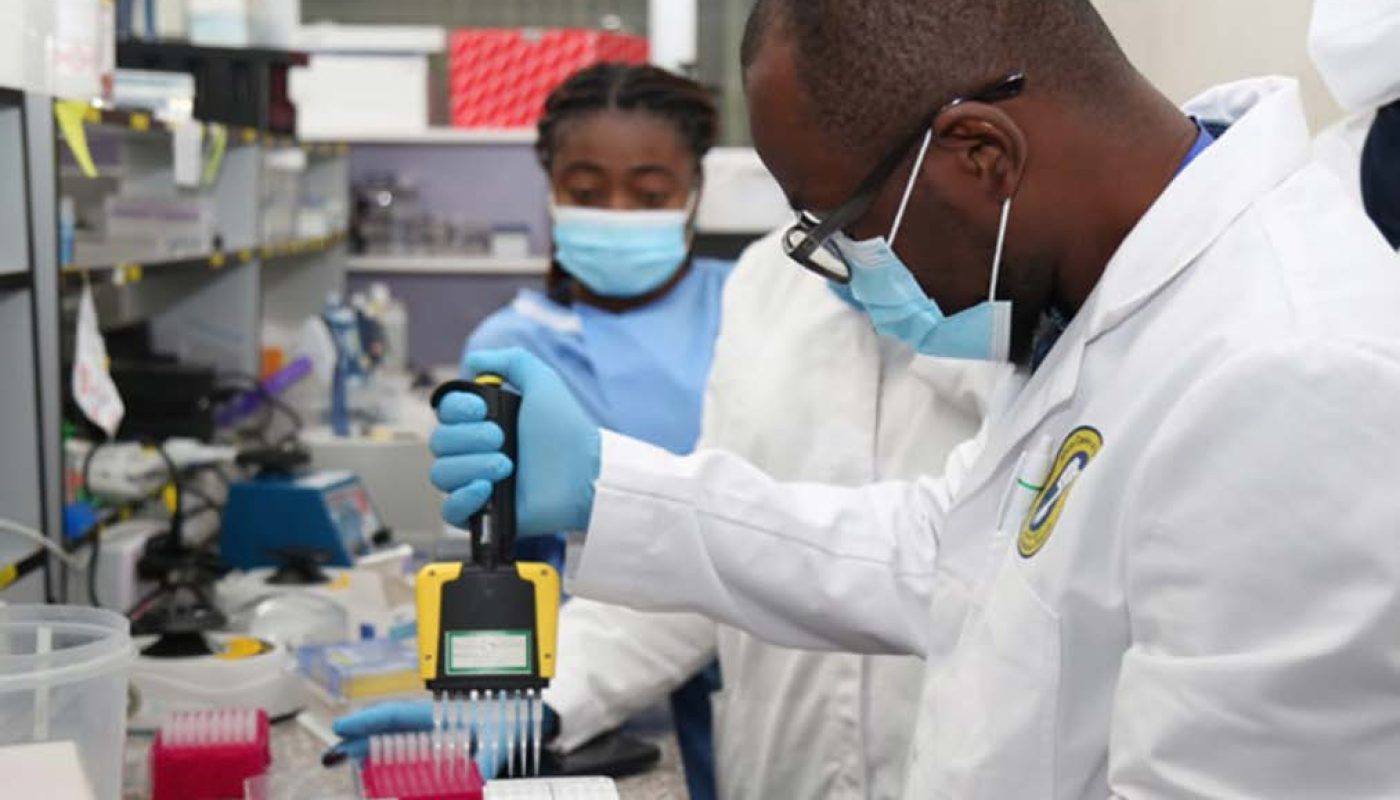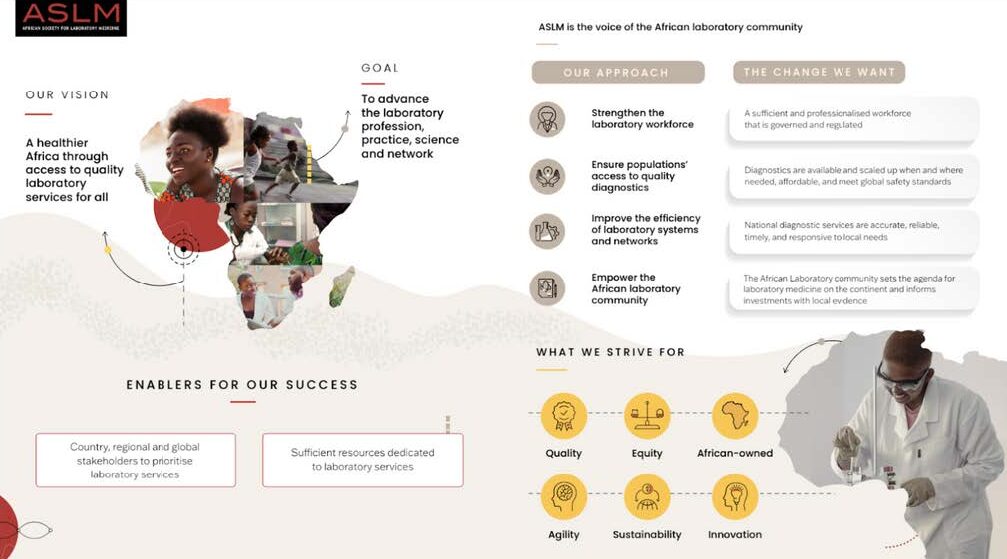Strengthening the African Society for Laboratory Medicine’s Measurement Efforts
Using Upfront Thinking to align ASLM’s strategy and measurement
SUMMARY
The African Society for Laboratory Medicine (ASLM) is a pan-African organization committed to achieving a healthier Africa by increasing access to quality laboratory services for all. Since 2011, ASLM has worked with country, regional, and global stakeholders to strengthen laboratory and diagnostic services and networks, and to ensure that country needs and priorities are reflected in the global laboratory and diagnostic agenda.
Following the launch of a new strategic plan, ASLM wanted to strengthen its measurement efforts. Databoom used Upfront Thinking to connect the organization’s measurement to its strategy. We developed a theory of change, a logic model, and capacity building tools to create SMART indicators for logframes. Together, these components form the foundation for a strong measurement framework.
SERVICES
- Theory of Change Development
- Logic Model Development
- Measurement Capacity Building
THE NEED
A Theory of Change (ToC) shows how an organization expects to achieve its desired change or impact, the possible pathways leading to change, and why these pathways lead to change. It will guide decisions about program design and set up hypotheses to test over time.
ASLM needed a robust, feasible, and compelling measurement framework aligned with its new strategic plan. We focused on the four main approaches (building blocks)featured in the new strategy. During a series of workshops with staff from across the organization, we identified how each approach contributes to the organization’s vision and mission, the desired change associated with each approach, and enablers to success. These efforts resulted in a ToC that clearly shows what the organization wants to change, the values it embodies, and how it will achieve this change. We worked with a design agency to develop an infographic that showcased key elements in a visually appealing and shareable format.
CREATE A LOGIC MODEL
Measures to achieve the theory of change
A logic model presents a linear sequence of “if/then” steps that flow from inputs to activities, outputs, outcomes, and impact. It explains why a program is a good solution for the problem at hand. It’s the second step in a measurement framework.
ASLM’s logic model needed to capture measurement for the ToC and for each program implemented. Our solution? We prepared a ‘universal’ logic model template based on the ToC that depicted each level of measurement for a desired building block. Shown below, for example, are the short-term outputs associated with each intermediate outcome for one building block, “Ensure populations’ access to quality diagnostics.”
The ‘universal’ logic model included short-term outputs for each intermediate outcome under each building block. Together, these formed a comprehensive picture of how ASLM would measure progress toward its goals over time.
To stress test the logic model, we mapped an existing logframe from one of ASLM’s largest projects to the model. This exercise revealed areas of congruence and some gaps. Working closely with the program team, we refined the logic model to be more responsive to the current project and refined some project indicators to better align with the ‘universal’ logic model. Retrofitting an existing program into the logic model was time-consuming, but ASLM can use the worked example as a reference to finalize logic models for other projects.
*Abbreviated example from ASLM’s full Logic Model
MEASUREMENT CAPACITY BUILDING
Resources to develop SMART indicators
Indicators are measurable information used to assess if an organization is implementing programs as intended and achieving the desired outcomes. They help decision-makers understand changes, identify trends, and prompt questions about the mechanisms of change. All indicators are not created equal. Strong indicators are specific, measurable, achievable, relevant, and time bound (SMART). Organizations that use SMART indicators for monitoring, evaluation, and learning can make data-driven decisions and optimize the impact of their projects and programs.
ASLM wanted to build their organizational capacity to develop SMART indicators. We designed a training module grounded in the latest research literature that introduced core terms, concepts, and different types of indicators, each illustrated with examples from ASLM’s own work. The module also included guided practice activities and a SMART indicator checklist to help evaluate and strengthen existing indicators. We held a “train the trainer” session for ASLM’s Monitoring, Evaluation, and Learning Unit and provided the module as a PDF and as a PowerPoint presentation with voiceover recording.
IMPACT
With a thoughtfully designed ToC, logic model, and capacity building tools to create SMART indicators, ASLM has the foundation for a strong measurement program. The collaboration strengthened ASLM’s capacity to measure and evaluate its progress toward its strategic goals. Organizing the ToC and logic model around four building blocks helped ASLM staff understand how their work fit within the organization’s overall mission and vision. Additional work is needed, however, to help staff transition from a “project mindset” – where they identify measures from project to project – to a “program mindset” – where they align measures to track progress against programs l and goals.
“The ToC has been very helpful,” Dr. Talkmore Martua, ASLM’s Acting Director of Programs. ALSM has presented the ToC to internal and external stakeholders. “We included in a brochure and other collateral, and plan to use it during a conference and meetings with donors.” ASML has also promoted sections of the ToC on their social media channels.
Acknowledgements: Thank you to (TK) for their review and inputs. This case study waswritten by Kim Longfield, Safeena Ahmed, Amy Lynn Grossman, and Lucy Jolf (Databoom) and designed by FLUYT.







